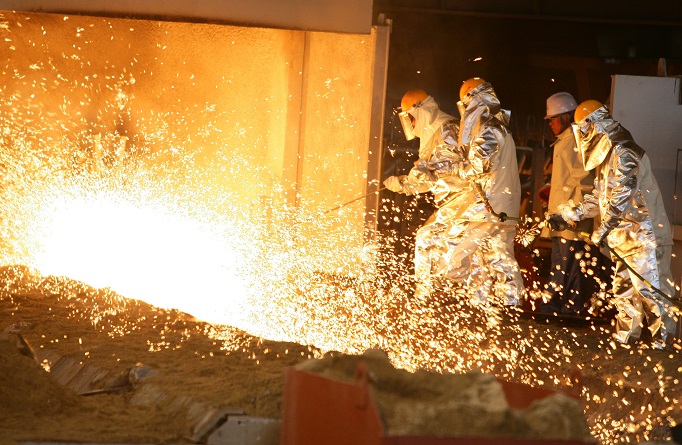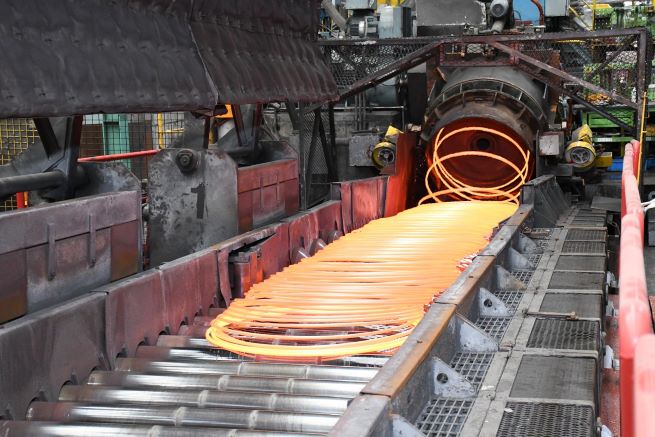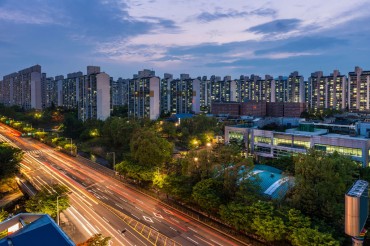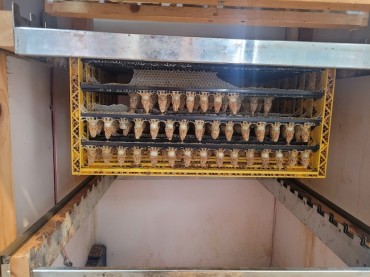
This photo, provided by POSCO, shows workers producing steel at its factory in Pohang, 272 kilometers southeast of Seoul.
SEOUL, Nov. 19 (Korea Bizwire) – POSCO, South Korea’s largest steelmaker, has ceased operations at its Pohang Steelworks’ No. 1 Wire Rod Mill after 45 years and 9 months of service.
The closure, effective November 19, comes as the global steel market grapples with oversupply, particularly from low-cost Chinese imports, which have eroded profitability.
The No. 1 Wire Rod Mill, operational since February 1979, produced 28 million tons of wire rods used in products such as nails, screws, tire reinforcements, and automotive components.
However, despite its legacy, POSCO faced mounting challenges in the oversaturated global wire rod market, where demand is just 90 million tons against a supply of 200 million tons.
This marks POSCO’s second major closure this year, following the shutdown of the Pohang No. 1 Steelmaking Plant in July. The company is also restructuring other low-profit operations, including considering the sale of its Zhangjiagang POSCO Stainless Steel facility in China.
The steel industry’s prolonged downturn has led to similar measures by competitors. Hyundai Steel, South Korea’s second-largest steelmaker, recently announced the closure of its Pohang Plant No. 2.
Declining domestic construction activity and weaker-than-expected economic stimulus in China have further strained the market.
Financial Performance Reflects Industry Woes
POSCO’s third-quarter steel revenue dropped 2.0% year-on-year to KRW 9.48 trillion, with operating profit plunging 39.8% to KRW 438 billion. Overseas steel sales grew 3.7% to KRW 5.28 trillion, but operating profit plummeted 90.1% to KRW 7 billion.
Similarly, Hyundai Steel reported a 77.4% year-on-year decline in third-quarter operating profit to KRW 51.5 billion, while revenue fell 10.5% to KRW 5.62 trillion , and it swung to a net loss of KRW 16.2 billion.

This photo, provided by South Korean steelmaker POSCO, shows officials posing for a photo to mark the shutdown of the No. 1 wire rod mill at its factory in the southeastern city of Pohang on Nov. 19, 2024. (Yonhap)
Strategic Response
POSCO plans to focus on high-margin products, expand exports to premium markets, and invest in developing proprietary technologies targeting growth industries such as electric vehicles and renewable energy.
A company representative emphasized that “short-term profitability measures and long-term innovation” are key to navigating current challenges and positioning for future growth.
This structural shift underscores the steel industry’s broader struggle with global oversupply and declining profitability, exacerbated by geopolitical trade tensions and the ripple effects of China’s excess production.
M. H. Lee (mhlee@koreabizwire.com)







